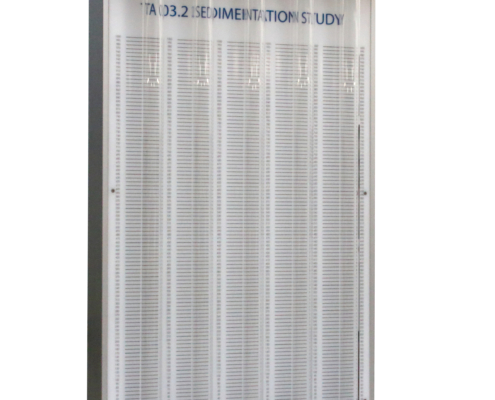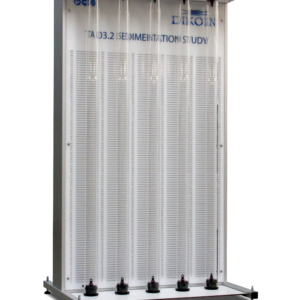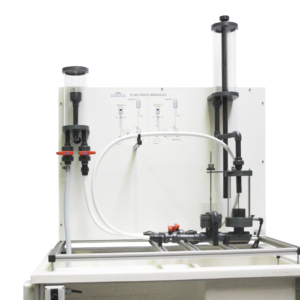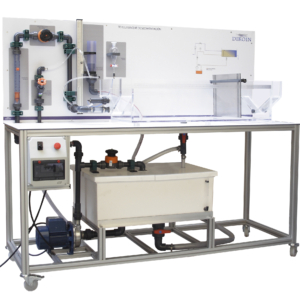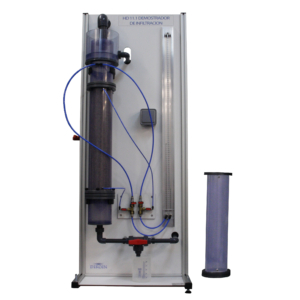TA 03.2 – Sedimentation Study
The objective of this equipment is to study and visualize the natural phenomenon called sedimentation, whereby the particles denser than the fluid that contains them and in which they are dispersed, fall by gravity depositing in the bottom.
Sedimentation is used to clarify all types of water, reducing turbidity. Depending on the characteristics of the suspension (heterogeneous mixture formed by solid particles dispersed in a fluid), the particles will sediment in different ways depending on the density of them, its concentration in the solution, and the density and viscosity of the fluid in which they are dispersed.
The equipment consists of 5 glass tubes placed in a support structure with a backlit graduated panel. Using this system we obtain an optimal visualization of the sedimentation process and its interfaces, with which we can measure the velocity of the sedimentation. Five 250 ml beakers and a 2 liter jar are supplied to prepare the suspensions that are to be introduced into the tubes. These can be extracted from their location to be able to agitate them until obtaining a homogenous dissolution of the aggregated solids.
- Study of the characteristics and determination of the sedimentation curves of the same suspension with different concentrations of solids.
- Influence of the density of the solid on the sedimentation velocity.
- Influence of the density and viscosity of the liquid on sedimentation velocity.
- Distribution of particle size. Characteristics of sedimentation of solids of the same density and different particle sizes.
- Study of the variation of the initial height in the sedimentation velocity.
- Study of the use of flocculants. Coagulation-flocculation.
- Comparison of the sedimentation characteristics of different suspensions.
- Dimensions: Height 1.230 x Width 800 x Lenght 620 mm.
- Anodized aluminum structure.
- 5 removable glass tubes of 1.000 mm length and 51 mm inner diameter.
- 10 Plugs with closing mechanism.
- 5 fluorescent lamps.
- Translucent, graduated and backlit back panel.
- Waterlight stopwatch up to 10 m, of resolution 1/100 s.
- 5 beakers of 250 ml.
- 2L capacity liter jar.
- 50 ml pycnometer.
- DLT Precision Balance Maximum weight = 410 g / Accuracy = 0.1 g.
- 200 g calibration weight, to periodically calibrate the precision balance according to the instructions of the same.
- Power supply: 230V/50Hz.

